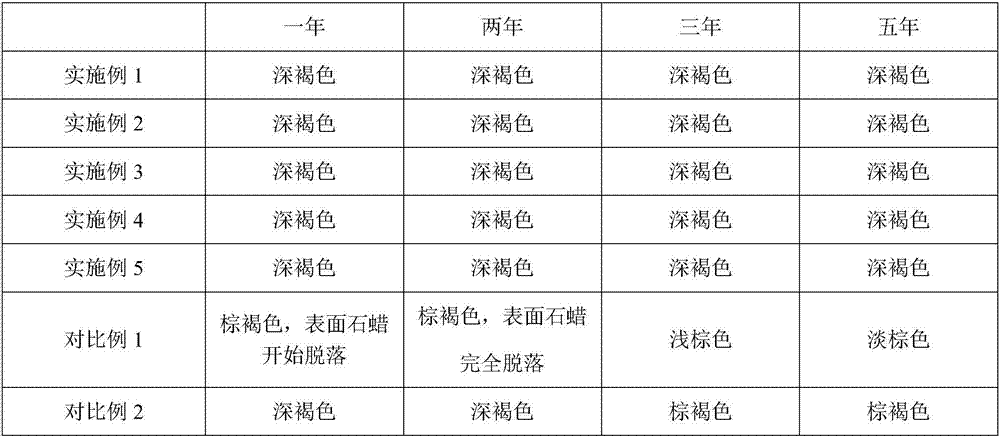Method for producing typhaceae plant specimen
A technology of plant specimens and production methods, which is applied in the field of production of Typhaceae plant specimens, can solve the problems of difficulty in preservation, difficulty in preserving the inherent shape, easy breakage and flying, etc., and achieves the effects of low price, less insects, and simple methods
- Summary
- Abstract
- Description
- Claims
- Application Information
AI Technical Summary
Problems solved by technology
Method used
Image
Examples
Embodiment 1
[0025] A preparation method of a Typhaceae plant specimen, comprising three steps of collection and trimming and drying treatment, color preservation and anti-mold treatment, and specimen preservation. The color preservation and anti-mold treatment is to apply paraffin wax on the surface of the inflorescence or infructome of the Typhaceae plant, specifically The steps are as follows: place the inflorescence or inflorescence of the Typhaceae plant at a place 12cm above the heated induction cooker, rotate and bake until it is hot to the touch, quickly use a soft brush to pick up the heated and melted paraffin (put the paraffin in a crucible and heat it with an induction cooker) to 60°C to melt), spread it evenly on the inflorescences or inflorescences of the Typhaceae plants, and apply the paraffin wax several times until the inflorescences or infructescences of the Typhaceae plants are no longer absorbed, that is, the paraffin wax has completely penetrated into it. Inside, stop ...
Embodiment 2
[0032] A preparation method of a Typhaceae plant specimen, comprising three steps of collection and trimming and drying treatment, color preservation and anti-mold treatment, and specimen preservation. The color preservation and anti-mold treatment is to apply paraffin wax on the surface of the inflorescence or infructome of the Typhaceae plant, specifically The steps are as follows: place the inflorescence or inflorescence of the Typhaceae plant at a place 12cm above the heated induction cooker, rotate and bake until it is hot to the touch, quickly use a soft brush to pick up the heated and melted paraffin (put the paraffin in a crucible and heat it with an induction cooker) to 60°C to melt), spread it evenly on the inflorescences or inflorescences of the Typhaceae plants, and apply the paraffin wax several times until the inflorescences or infructescences of the Typhaceae plants are no longer absorbed, that is, the paraffin wax has completely penetrated into it. Inside, stop ...
Embodiment 3
[0039] A preparation method of a Typhaceae plant specimen, comprising three steps of collection and trimming and drying treatment, color preservation and anti-mold treatment, and specimen preservation. The color preservation and anti-mold treatment is to apply paraffin wax on the surface of the inflorescence or infructome of the Typhaceae plant, specifically The steps are as follows: place the inflorescence or inflorescence of the Typhaceae plant at a place 12cm above the heated induction cooker, rotate and bake until it is hot to the touch, quickly use a soft brush to pick up the heated and melted paraffin (put the paraffin in a crucible and heat it with an induction cooker) to 60°C to melt), spread it evenly on the inflorescences or inflorescences of the Typhaceae plants, and apply the paraffin wax several times until the inflorescences or infructescences of the Typhaceae plants are no longer absorbed, that is, the paraffin wax has completely penetrated into it. Inside, stop ...
PUM
 Login to View More
Login to View More Abstract
Description
Claims
Application Information
 Login to View More
Login to View More - R&D
- Intellectual Property
- Life Sciences
- Materials
- Tech Scout
- Unparalleled Data Quality
- Higher Quality Content
- 60% Fewer Hallucinations
Browse by: Latest US Patents, China's latest patents, Technical Efficacy Thesaurus, Application Domain, Technology Topic, Popular Technical Reports.
© 2025 PatSnap. All rights reserved.Legal|Privacy policy|Modern Slavery Act Transparency Statement|Sitemap|About US| Contact US: help@patsnap.com

